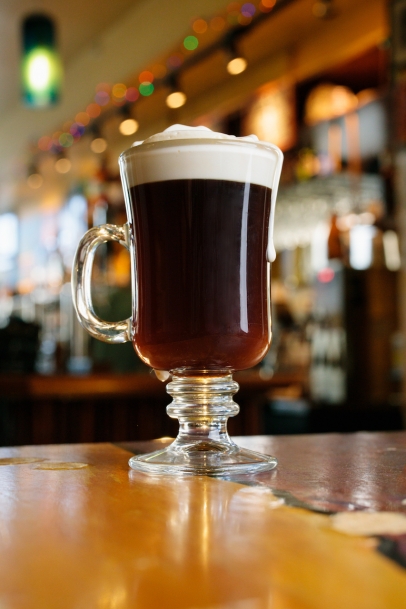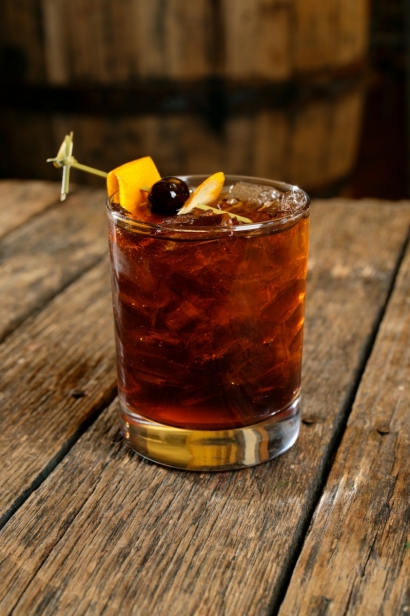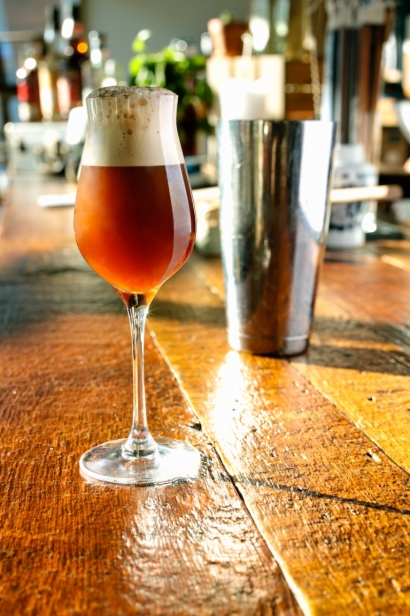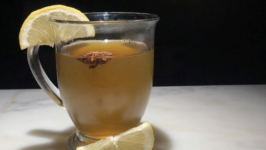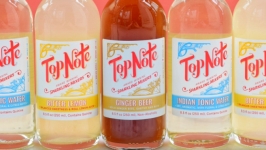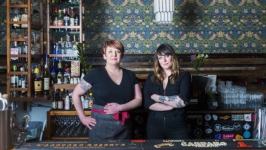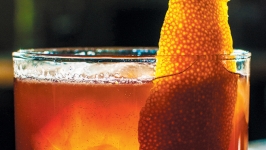Coffee Break: Coffee Cocktails
This winter, I want to celebrate the collision of two worlds: coffee and cocktails. Despite their similarities — dedication to craft, tradition and flavor — coffee and cocktails tend to live in separate houses. In America, this separation is especially stark, yet, at their intersection lies a nexus of fascinating parallels and contrasts which translate into unique and satisfying beverage experiences.
Our first coffee cocktail is the most classic: Irish coffee.
Irish coffee became popular in America during the 1950’s thanks to travel writer Stanton Delaplane, and combines Irish whiskey, sugar and coffee with a float of whipped cream. The difficult execution of an Irish coffee lies in the whipped cream: a stiff cream won’t pour easily onto a drink. An Irish coffee should be sipped up through the cream, which a stiff cream won’t allow. This means that the cream must be hand-whipped to the perfect texture.
One can find this balance of heat, sweet and cream on full display at Milwaukee legend, Rochambo, an emblem of a time when coffee shops weren’t afraid to be quirky. When I first visited Rochambo for an Irish coffee, I immediately felt unprepared that I hadn’t brought along a copy of Rilke in my blazer pocket.
Using Valentine coffee, and served in a properly footed and handled glass, Rochambo’s Irish coffee is a classic winter-warmer that delivers a pop of Irish whiskey rounded out by robust coffee and the sweetness of sugar. The heavy, cool cream balances the drink, and the personable barista staff are always supportive.
Known for making syrups in-house and sourcing quality tea, Rochambo also offers a handful of other piquant coffee cocktails: check out the Snowflake, the Mile High and the Bermuda Black at this iconoclastic coffeehouse, open until midnight.
After his work at Stone Creek Coffee, Steve Hawthorne founded Hawthorne Coffee Roasters, his own family-run roastery and cafe on South Howell, often featuring coffee from the classic growing regions in Brazil, Colombia and Ethiopia. While his new venture was finding its feet, Steve began to moonlight at Bryant’s Cocktail Lounge, sparking his interest in the craft of spirits and cocktail building.
Over the last year or so, Steve has been quietly assembling an array of coffee cocktails spanning several menu pages, often featuring spirits such as whiskey and Carpano Antica. He has a dedication to coffee cocktails that I admire, which took real time and work to curate. Using an array of top-quality ingredients, Hawthorne’s Manhattan, Irish coffee and Boulevardier are all made with coffee or coffee-infused ingredients and are an excellent jumping-off point for anyone familiar with those classics but is curious about this marriage of worlds.
On the anniversary of their third year in business, I had the distinct pleasure of drinking a Coffee Old Fashioned, courtesy of Steve. Intriguingly, he chose to incorporate his batch-strength cold brew into this drink, a strong ingredient that enjoys a little dilution, not unlike whiskey. While riffing on one of the most distinct cocktails might seem like heresy, I found the addition of coffee brought forth a crispness and accentuated the grain, malt and vanilla notes of the whiskey while imparting a dried-apricot-like flavor.
My final coffee cocktail comes from the minds at Bittercube Bar & Bazaar. Founded in 2010 as a craft-driven bitters maker, Bittercube’s quality found their admirers in bars across the country. This year, the company began work on a series of their heritage liqueurs including an amaro, an aquavit and a coffee liqueur that they use to make an Espresso Martini. I usually find coffee liqueur to be an enigmatic and an occasionally unctuous beverage that I rarely enjoy. Spirits infused with coffee without preservatives tend to have a volatility that gives them a peak flavor window of only a few weeks. Steve Hawthorne affirmed that he personally drinks everything he can’t use once it’s faded.
There is definitely a debate surrounding coffee liqueur and the way in which coffee is incorporated into the spirit. While some opt for steeping a spirit in coffee, many of the liqueurs on the market use cold-brew coffee. There is a significant variation in the base spirit chosen for the beverage as well, marking this category as one that invites innovation and experimentation as modern palates evolve.
I spoke with Brandon Reyes, Research and Development Coordinator at Bittercube about their new Heritage Liqueurs and the challenges of creating a quality coffee liqueur. While Brandon wouldn’t reveal whether Bittercube prefers to add cold brew or steep a spirit in coffee (or perhaps a mixture of both), he noted that, “The current incarnation of the drink is experimental,” although he did reveal that they add a small amount of vanilla bean and clove, “for depth.”
Brandon went on to say that, “The liqueur is designed so that when diluted through the shaking process, it reaches the desired alcohol content of a standard Espresso Martini which is made from vodka, coffee liqueur, espresso and simple syrup. Our concept was to condense these ingredients in such a way that the flavors were balanced enough to drink on its own, but strong enough to stand up to being shaken. The cocktail is shaken with ice first, then shaken again without ice. This technique is otherwise known as a reverse mime shake and we’ve found it produces the best and most voluminous froth. The martini is then finished with a few cracks of smoked sea salt, which enhances the sweet and savory nature of the drink.”
Full production date of this tasty liqueur is as of yet unknown, but for the time being lucky customers can see Bittercube’s Espresso Martini appearing on the menu at their Bar & Bazaar on West Lisbon St.
I hope that this winter you’ll find some time to explore these fascinating and delicious drinks, and that you too will be inspired to mix and enjoy your own coffee cocktails. Cheers!


